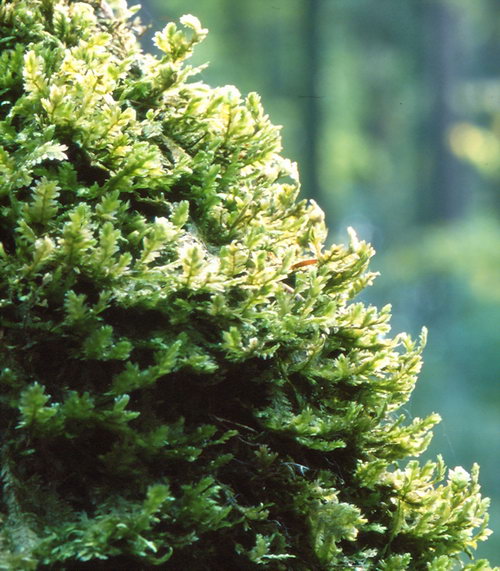
(If you need to know what an pleurocarp is, click here)
1 Tips of branches somewhat curved or curled downwards — 2
Tips of branches all flat — 4
2 Leaves usually transversely wrinkled (undulate); shoots 4-5 mm. wide at tips — Neckera crispa
Leaves not undulate; shoots narrower (up to 3 mm. wide at tips) — 3
3 Branches ascending; habit loose and untidy, often with strong superficial resemblance to leafy liverwort — Homalia trichomanoides
Branches mostly prostrate; plant forming dense, pale yellowish green patches — Neckera complanata
4 Leaves large, translucent, with rounded tips and extremely large cells that are easily seen with lens; shoots 5-8 mm. wide — Hookeria lucens
Leaves smaller, less translucent, acute-tipped; cells not seen with acute-tipped; cells not seen with lens; shoots 4-5 mm. Wide or less — 5
5 Shoots strikingly pale green, scarcely glossy; leaves transversely undulate — Plagiothecium undulatum
Shoots deeper green, moderately to very glossy; leaves not undulate — 6
6 Shoots dull olive-green and not very glossy; leaves much shrunken when dry so as to appear rather narrow and widely spaced — Plagiothecium sylvaticum (or Leptodictyum riparium, which has nerved leaves)
Shoots bright green and very glossy; leaves little changed when dry so that they still appear crowded — 7
7 Plant moderately robust (shoots 2-4 mm. wide) — Plagiothecium denticulatum
Plant slender, forming neat patches with many parallel shoots about 1 mm. wide; minute deciduous branchlets often present in axils of some leaves — Isopterygium elegans

 |
For comments about this site
please mail to:
 (e-mail address given as graphic to avoid spam) |